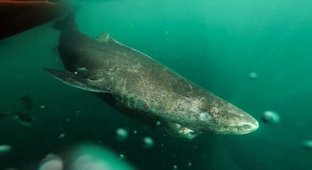Many people think that the most formidable carnivore of the ocean is the scary toothy shark. White or whale, it doesn't matter - they are monsters! However, in the depths of the sea there is someone no less ferocious and bloodthirsty, but completely unknown - the caranx. This beast is rightfully considered the apex predator, it keeps the entire ecosystem in fear and kills those same sharks just for fun. And, by the way, they attack people too! 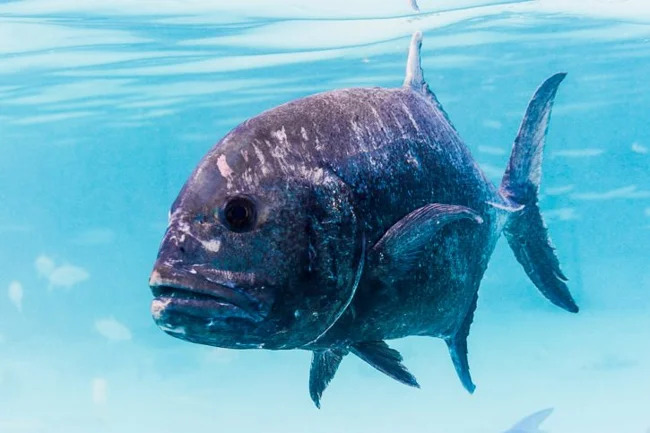
Yes, I watched the movie "Jaws". A funny comedy where everyone is afraid of sharks!
The giant yellowfin trevally, or ulua, is a sea torpedo with teeth and a nasty character. Forgive me, but it looks like a cartoonish testosterone jock: a bunch of muscles, aggression, and an indefinitely insane look. And it behaves the same way: the trevally just wants to get to someone. The fish grow up to 180 centimeters in length and weigh almost 80 kilograms - with such dimensions, you can get to almost anyone. Plus teeth, plus high speed, cool maneuverability and remarkable strength - and now they are already looking at all other underwater inhabitants as if they were lunch. 
This is roughly what every first catch looks like, according to Dad.
Actually, that's how it is. In the tropical waters of the Indian and Pacific Oceans, caranxes occupy the top of the food pyramid. The fish uses many strategies to commit robberies and vandalism. Ambush hunting, adrenaline-fueled pursuit, brazen racketeering. 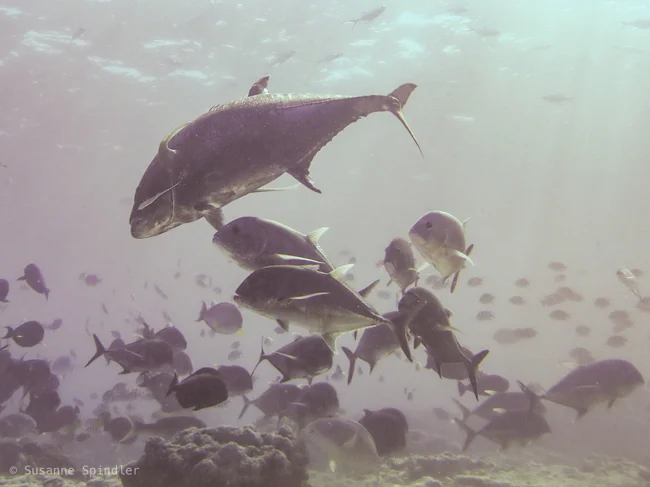
In some cases, caranx hunt in a pack. This strategy is most often used by younger fish.
Without a twinge of conscience, caranx steal prey from seals and sharks. Ulua finds another predator in the process of hunting and waits. When it scares the victim, the caranx is right there - grab! In a moment, the fish develops a speed of up to 60 km/ h - the robbed one will not even have time to understand that he was fooled! And try to prove that this is unfair, you can be next. 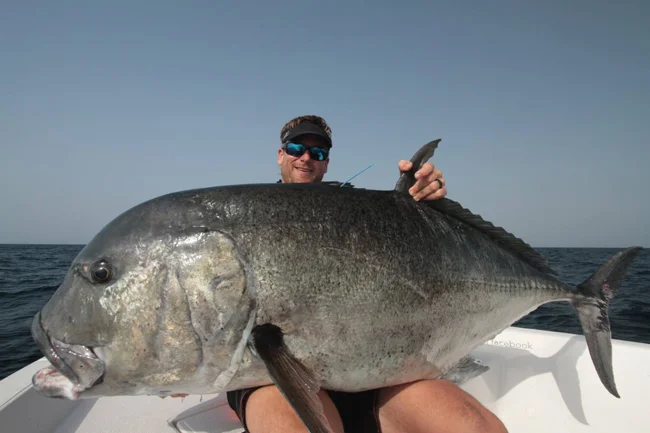
A photographer will be a great addition to the main course!
Caranxes even strive to establish their dominance in the sky! Ulua is one of the few fish that purposefully hunts birds. And it does this on the fly! Ulua does not simply rush in pursuit, but carries out a complex mathematical calculation: where the prey is heading, how much it weighs, how far it will fly in a unit of time - the fish instinctively analyzes all this, after which it makes a deadly throw. They are not so stupid, it turns out! 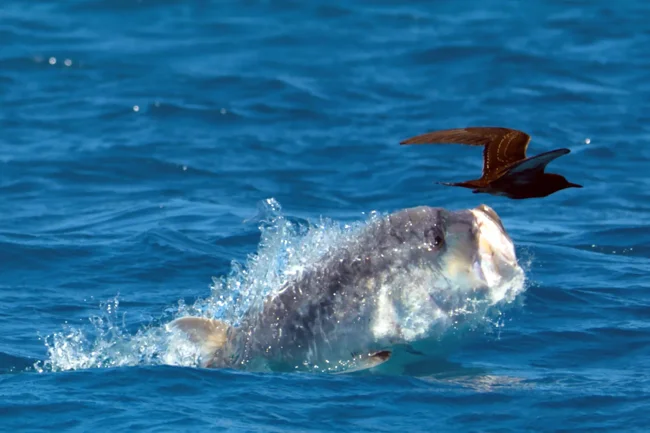
Terns are targeted by caranx. Interestingly, adult birds know very well that it is not worth sitting on the water where this fish swims. Young individuals became the catch of ulua.
Scientists have calculated that in habitats with a natural balance and diversity of fish, ulua make up up to 71% of the total biomass of predators. That is, if you catch all the biting-toothed ones and weigh them, more than half will be our musclemen. That is why these beasts keep all the continental and island coasts of the Indo-Pacific region in fear. 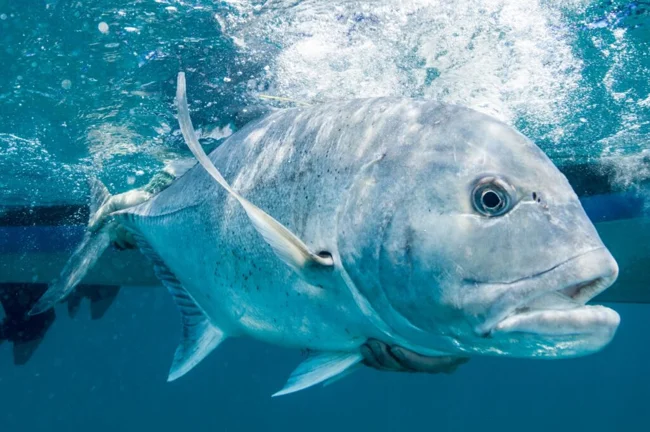
Have you heard about the Pacific Ocean? I reassured you.
Predators do not swim at random - each individual has its own hunting grounds, approximately 9 kilometers of coastal waters or reefs. Their ulua regularly patrol for prey and other caranxes. If they are lucky, there will be mating, if not, there will be a showdown. By the way, sometimes even sharks get caught in the fray. Having spotted a potential competitor, the caranx rams it with its stubborn head many, many times in a row, aiming for the gills and sides. Due to severe injuries, the toothy one bleeds out and dies. But here's what's interesting: despite their omnivorousness and gluttony, the ulua do not eat the sharks they kill. This is not a hunt, but a struggle for leadership. 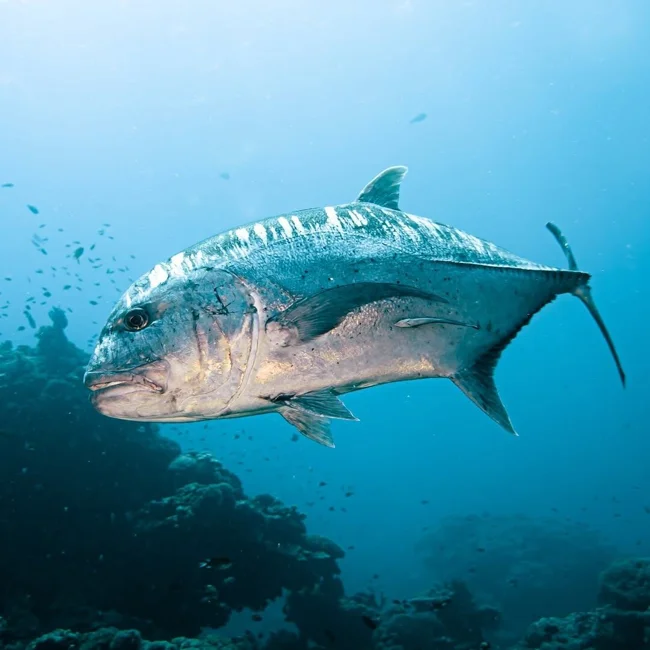
Have you heard of the megalodon? It's extinct because of me.
Caranx behave with their children in the same way as with their prey - brutally and harshly. In the warm season, the fish gather in large schools: females spawn, males polish this business with milt. That's all their parenting. The tiny fry must break through the thorns to the stars of oceanic dominance on their own. At the larval stage, the ulua actively devours plankton. It takes its own not by force, but by ingenuity. Young caranx live in densely populated reefs. In order not to become an easy snack for local inhabitants, especially brainy fry climb inside jellyfish. The latter are neither hot nor cold from this, and the fish receive excellent protection in the form of stinging tentacles. It's good that they won't have to endure humiliation for too long. In three years, a 6 mm crumb turns into a half-meter-long fool! 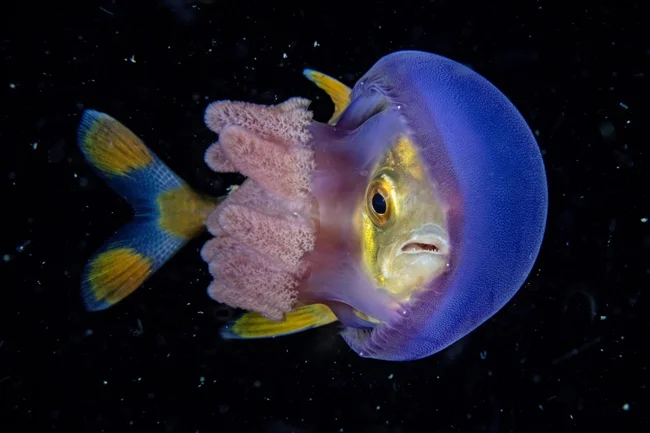
I'm in the house! 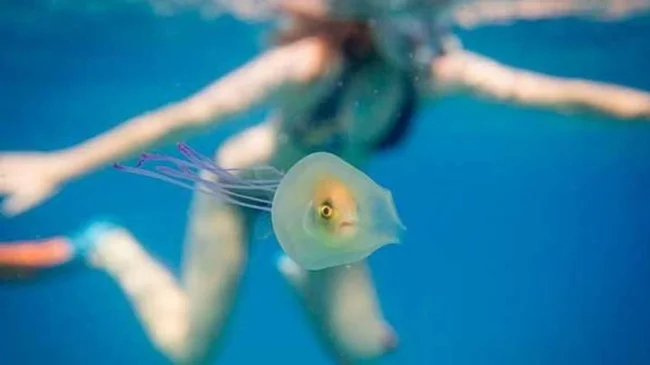
When you're so afraid of women that you hide in a jellyfish...
The only predator that can hunt an adult trevally without risking their life is people. Previously, these fish were caught on an industrial scale. Today, the ulua population has significantly decreased. If in the early 1900s they caught about 328 tons, then by 2000 the total catch was already 45 tons. But there is no ban on catching ulua, and what will happen next is unknown. 
So big that it didn't even fit in the frame!
One good thing: now many amateur fishermen prefer to release caranxes into the wild after a cool photo shoot. This may be a drop in the ocean, but it's better than nothing at all, right? Catching such an impressive fish is considered a great achievement. You can do it with a fishing rod, or you can get it in an underwater hunt. But it's not a fact that you will remain the hunter in this scenario. There is a known case when the evil "prey" rammed a man at full speed and broke a couple of his ribs. 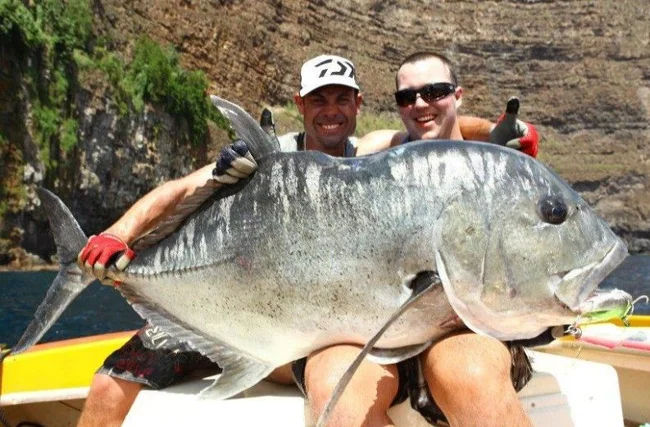
Photo of a hunter with his prey. It's not entirely clear who's where.
Besides, eating trevally is not entirely safe. The meat of some individuals contains the poison ciguatoxin. There is no specific treatment for the poison, and it can accumulate in the body, so it's better to refrain from eating ulua - it will be better for everyone, both nature and you personally.
Add your comment
You might be interested in:













